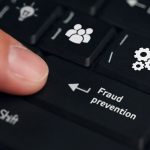Over the past few months, Martino has been providing insights into using images and videos as evidence in court. In the final part of this series, he discusses if enhanced images can be used in court. With technology taking over many sectors, this is a must-read article where we learn how the digital world may change the courts and its hearings.
Written by Martino Jerian, CEO and Founder, Amped Software
Recently I testified in court as a forensic image and video expert and, as is sometimes the case, the use of some filters to enhance images was questioned. As I have written in the previous months, there is some processing that should be entirely avoided, since it lacks accuracy and repeatability. For example, we should avoid techniques which add new information relying on data obtained by a training set, or techniques which have a random component.
Some years ago, there was a school of thought that said, only classical image processing techniques available for analog photography can be applied to digital photography in the forensic context. What are the risks of applying the wrong processing? We are not interested about having a “pleasant” image, we are concerned about extracting information from it. The risks of incorrect processing are:
- Removing existing information: for example, removing the grain in a dark image can also remove important details.
- Adding new information: for example, creating or amplifying image artifacts which may be misinterpreted as a real detail.
By this reasoning, we are not referring to details at the pixel level, but at the image semantic content. In general, if I resize an image, I add a lot of new pixels but if the processing is correct I am not adding any new relevant information.
It’s important to understand that most of the image processing techniques present a compromise: I enhance something at the expense of damaging something else. For example, if I lighten an image to show a dark part more clearly, it’s very likely that you will lose details in the parts of the image that are already bright enough.
For this reason, it’s generally very difficult to say which techniques are good and which techniques are bad. Their applicability must be related to the specific case and the parameters used. Filters are just tools, and as such, they can be used in the right way, obtaining better images, or in the wrong way, damaging the image quality or presenting wrong information.
Because of this, it’s important not to blindly apply different enhancement and restoration filters, but to apply them in order to correct a specific defect. Similarly, the tuning of their parameters must be consistent with the amount of defect you want to correct. Abusing the filters can create images which are worse than the original.
It is therefore important, as I’ve said before, to work with experts who have specific experience in the forensic image and video analysis field as they know what to do, and how to identify what has been done incorrectly.
A lot of pressure can be placed on the processing done by the experts, but most people ignore that there are many other possible issues that can occur during the image acquisition and visualization phases.
A lot of processing happens in the camera itself, from CCTV to smartphones. Unless raw image pictures are used, which is very rare, the value of the pixels in an image are hugely dependent on the processing and encoding which automatically happens inside the device in order to obtain the desired ratio between image quality and technical limitations.
And then, even to simply visualise the image, there’s a lot going on under the hood. Different software can decode the image in a slightly different way, which can enormously impact the final result. A lot of image processing happens on the graphic card of the PC, on the screen, or on a projector. Just by playing with the brightness of the projector you can understand how much of the visible information in an image can be altered by such simple tuning.
There is then the most critical part of the processing: our eyes and our brain. Different people see and want to see different things in the same image. Analysing things in an objective and unbiased way is often very difficult, unless you can measure things numerically. And in fact, avoiding and limiting the various types of biases are one of the most important aspect of forensic science currently studied.








